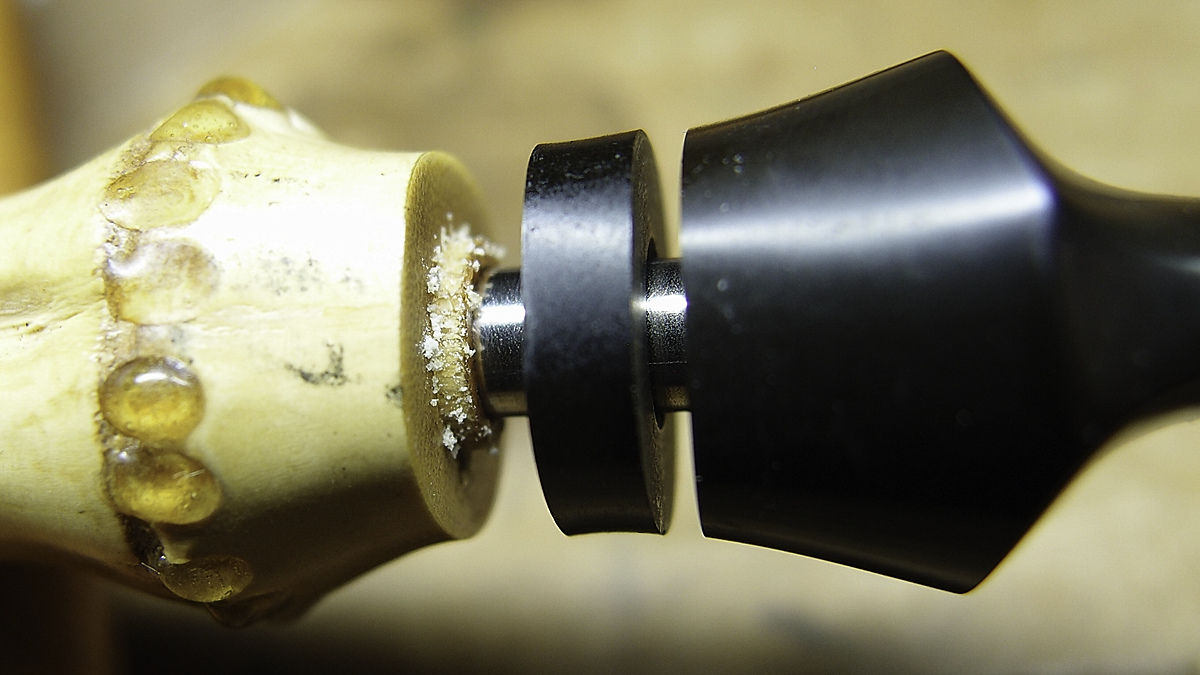Dealing with the after-effects of badly executed shank extensions is a significant part of my workload.
The problem is that artist-y brains are bored by engineering-y stuff
and there's no standardized method (herding cats, that), so not enough thought goes into it. i.e. glue on a chunk of wood and go
Me? I'd do a full mortise and tenon between the extension and shank---not a flat join---AND line the entire shank from the base of the primary mortise to within 3/8-1/2" of the chamber with ss tubing. Regardless of the extension material type.
Except horn. I would never go near real horn for that task because I have no idea how to obtain the (obviously) magic stuff a handful of Euro super carvers have access to. Comes from secret Latvian forests with magic deer, or something. Anything less **WILL** eventually cloud from incremental delamination, and (more eventually) detach from the shank for the same reason.
Looks great until then, though.

UFOs must be real. There's no other explanation for cats.



